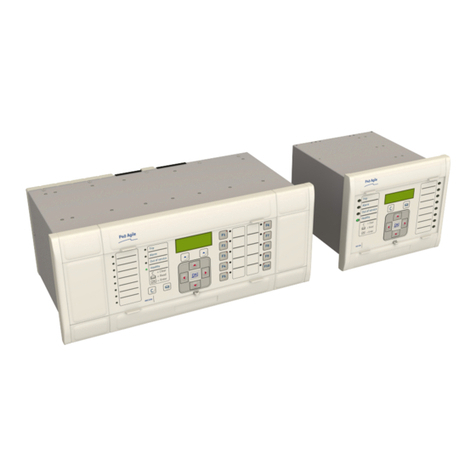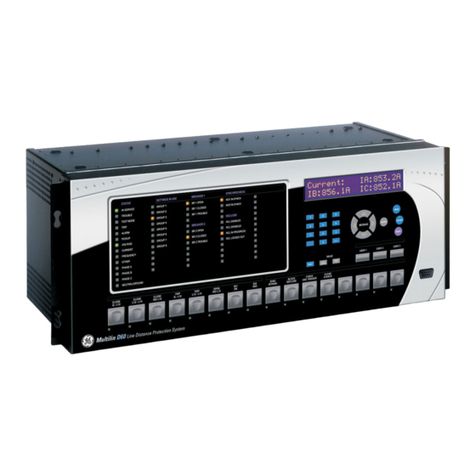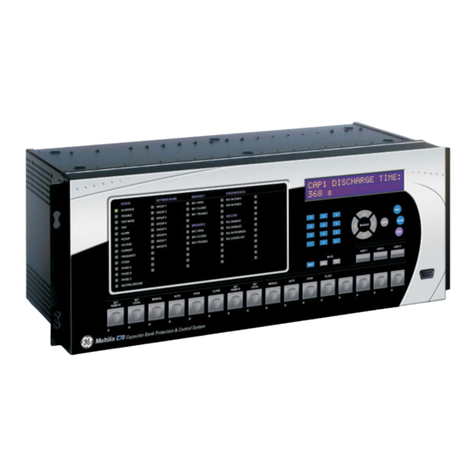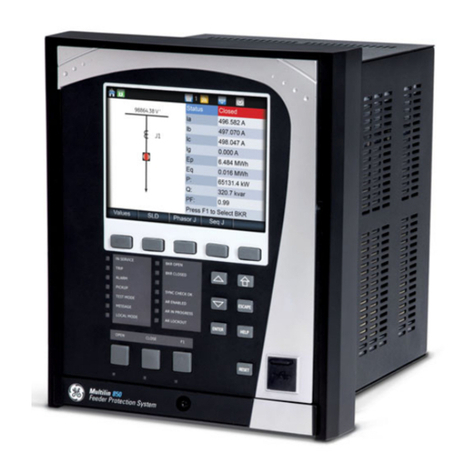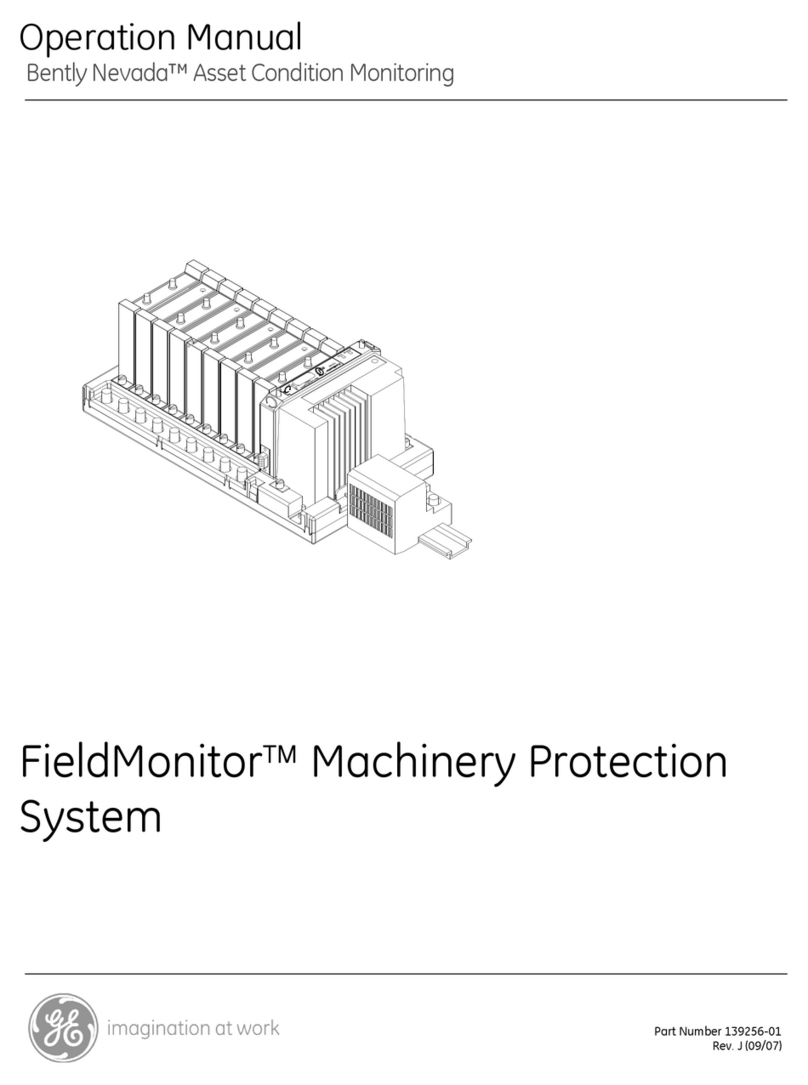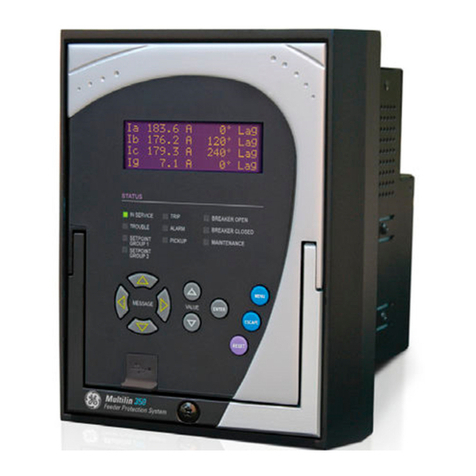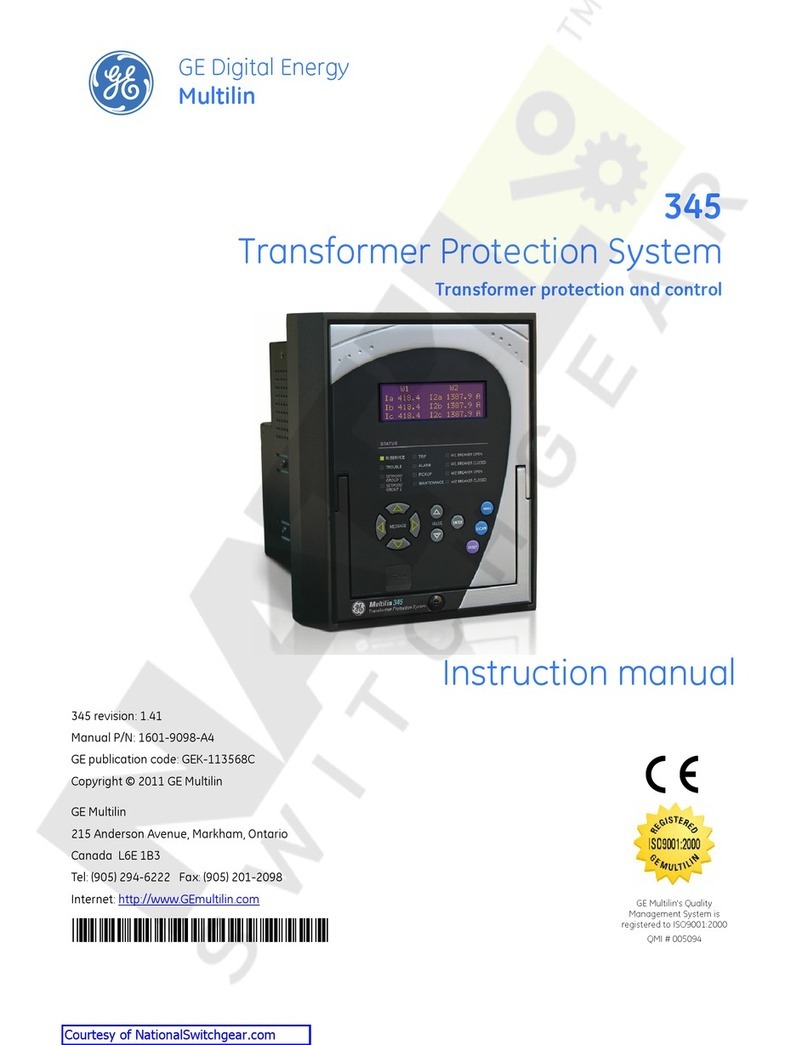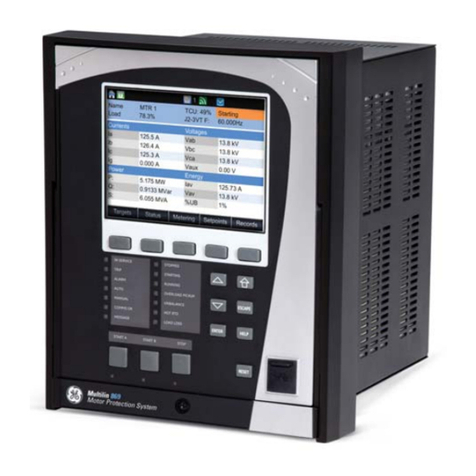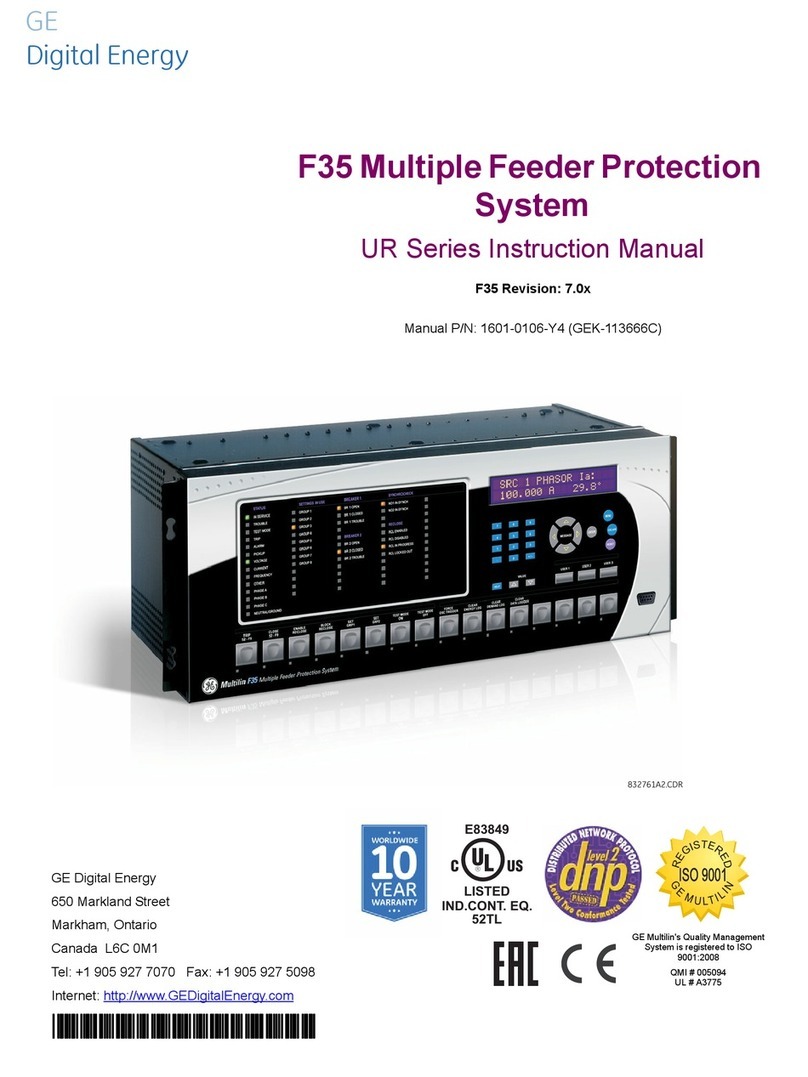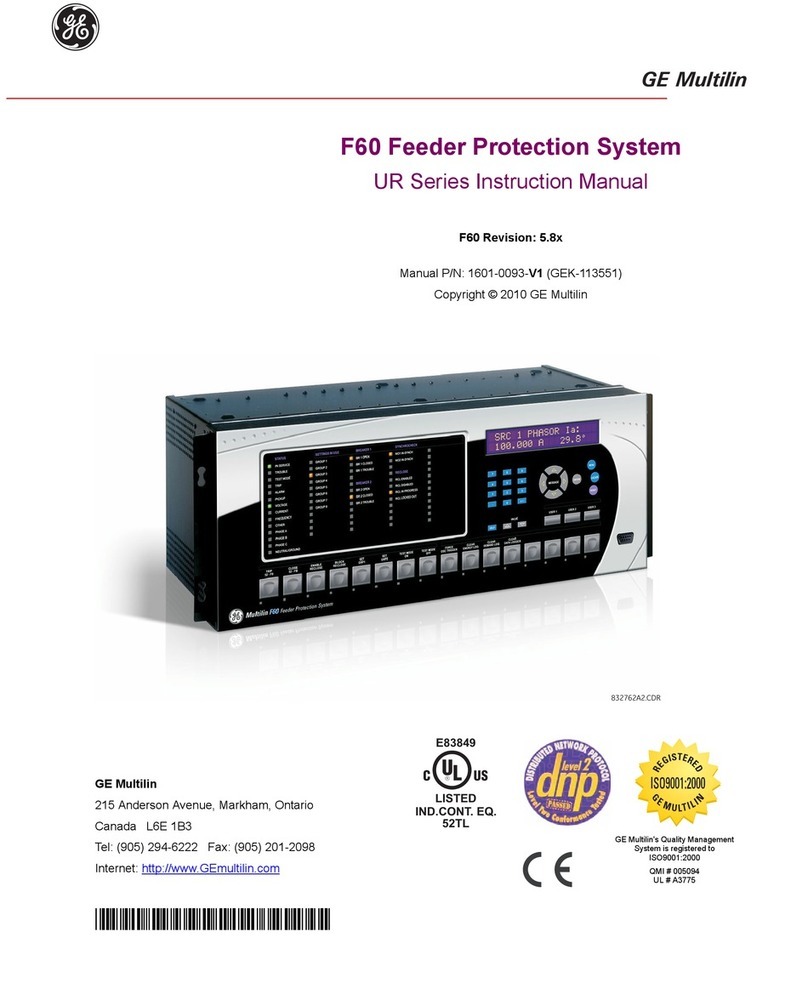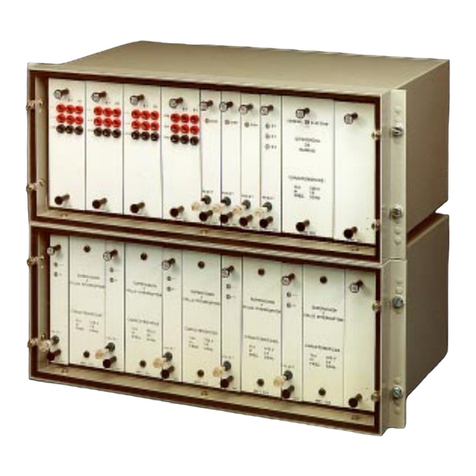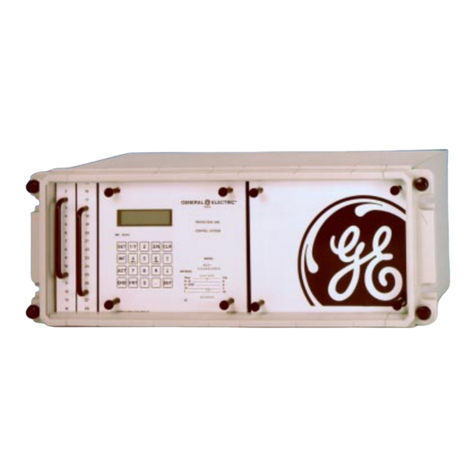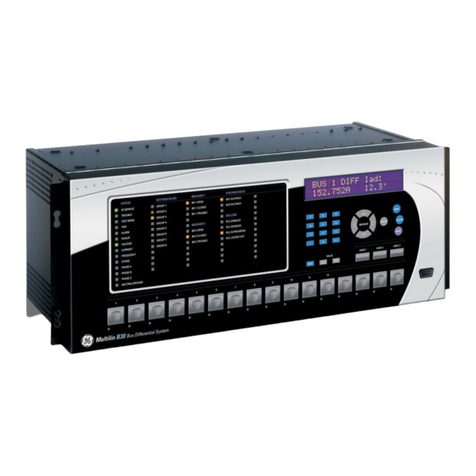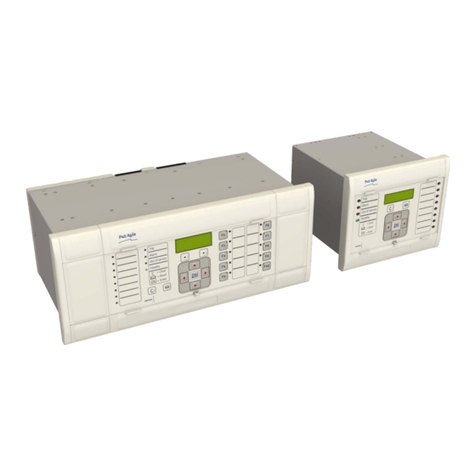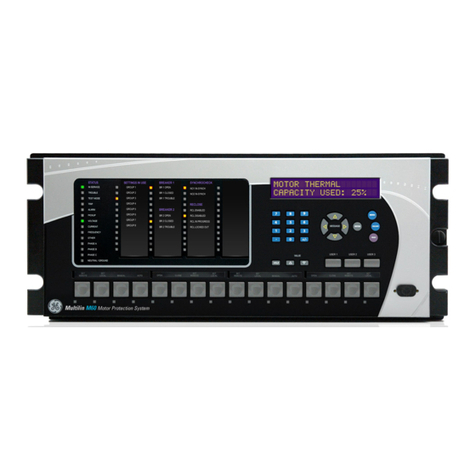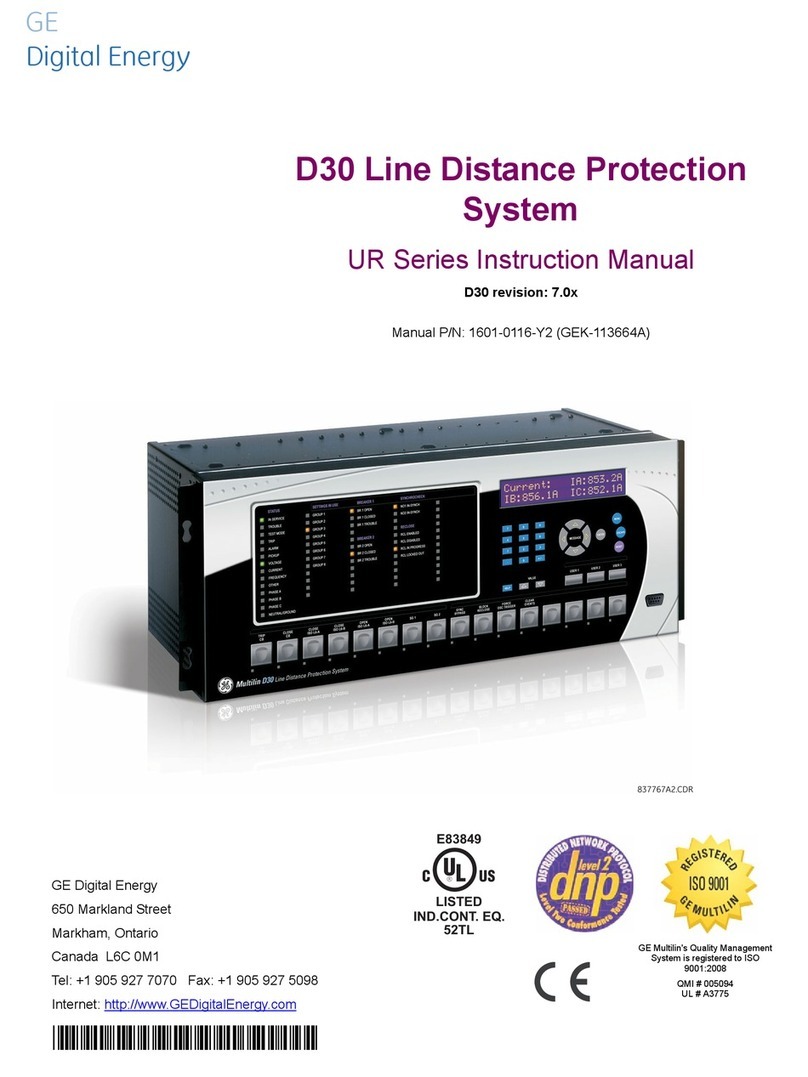
SecoGear – Installation, Operation and Maintenance Manual 10 of 56
Hazard Classifications
The following important highlighted information
appears throughout this document to warn of potential
hazards or to call attention to information that
clarifies a procedure. Carefully read all instructions
and become familiar with the devices before trying to
install, operate, service or maintain this equipment.
Indicates a hazardous situation that, if not
avoided, will result in death or serious injury.
Indicates that if the hazard is not avoided could
result in minor or moderate injury.
Indicates a hazardous situation that, if not
avoided, could result in death or serious injury.
It is used to notify of practices not related to
personal injury.
Trademarks
SecoGear® SecoRMU®
SecoCube® SecoBloc®
SecoVac® Multilin®
All third-party trademarks are the property of their
respective owners.
Warranty
This document is based on information available at the time
of its publication. While efforts have been made to ensure
accuracy, the information contained herein does not cover
all details or variations in hardware and software, nor does
it provide for every possible contingency in connection with
installation, operation, and maintenance. Features may be
described herein that are not present in all hardware and
software systems.
GE Industrial Solutions assumes no obligation of notice
to holders of this document with respect to changes
subsequently made. GE Industrial Solutions makes no
representation or warranty, expressed, implied, or statutory,
with respect to, and assumes no responsibility for the
accuracy, completeness, sufficiency, or usefulness of the
information contained herein.
No warranties of merchantability or fitness for purpose
shall apply.
Contact your local sales office if further information is required
concerning any aspect of SecoGear switchgear operation
or maintenance.
DANGER
WARNING
CAUTION
NOTICE
!
!






